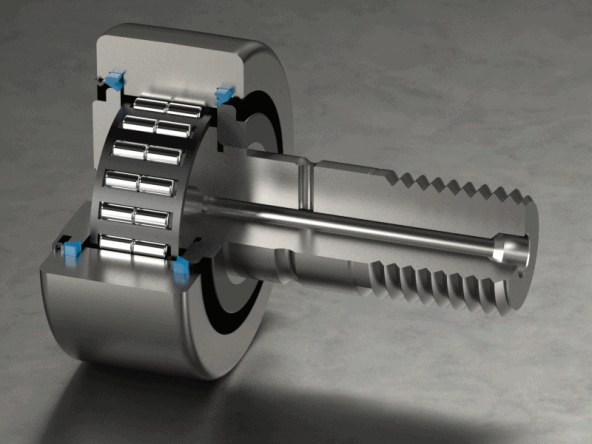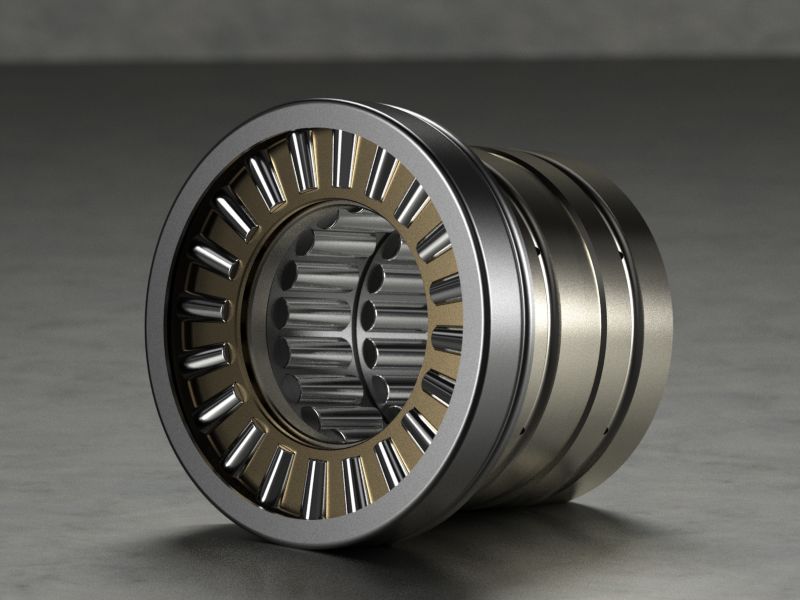Five steps to correctly install the bearing
2021.03.24
Whether the bearing is installed correctly or not is related to the service life of the bearing, so everyone must pay attention to it. The following bearing encyclopedia will introduce in detail the five steps to correctly install the bearing. I hope it will be helpful to you who are using the bearing.
01 Use special tools for bearing installation and disassembly
Advanced installation tools can avoid bearing damage caused by improper tools and operations during installation. For example, when installing the bearing, the staff used the copper rod knock-in method, which is easy to cause uneven axial force of the bearing, causing deformation of the cage, damage to the rolling elements, and larger clearance, and the copper rod is in the process of knocking. The copper powder flies into the bearing cage, which is easy to cause bearing failure.

02 Do the bearing inspection work before installation
For old bearings, check whether there are burrs, scratches, or cracks on the surface of the ball (column). Whether the radial clearance and axial clearance of the old bearing are qualified, generally only the radial clearance is measured. For new bearings, first check whether the bearing model is correct. Refer to Table 1 for the radial clearance standards of rolling bearings. For example: Model 6318 deep groove ball bearing, bearing inner diameter 90mm, its radial clearance range is 0.016~0.046mm, the maximum wear of the bearing can also be found to be 0.25mm.

03 Check the matching size of the bearing and the rotor shaft
When assembling the motor, it is necessary to carefully check the matching dimensions of the bearing and the rotor shaft when the bearing is installed (Table 2), and the matching dimensions of the bearing outer ring and the end cover hole.

04 Control the amount of oil in the bearing and the bearing chamber
Excessive oil in the bearing and the box will cause the rolling elements of the bearing to slip, causing the rolling friction to change from rolling friction to sliding friction, which will damage the rolling elements of the bearing. Due to the excessive amount of oil in the bearing, the free space in the bearing box is small, and the operating temperature of the bearing will be reduced. As it rises, the lubricating grease density decreases, the lubricating oil film of the rolling elements becomes thinner, and the lubrication conditions are poor. It is easy to cause abnormal bearing noise, surface slippage, and shorten the life of the bearing. Generally, there is a bearing oil chamber on the side of the motor end cover (except for the motor designed as a double-sealed bearing). According to the motor speed, the oil filling amount of the bearing chamber can be implemented according to the following standards: when the motor speed is less than 1500r/min, the oil filling amount is the bearing chamber 2/3 of the volume. When the speed is between 1500 and 3000r/min, it is 1/2 of the volume of the bearing chamber. When the speed is greater than 3000r/min, it should be less than or equal to 1/3 of the bearing volume. In the actual work process, for bearings that run at high temperatures and high speeds, bearings with sealing surfaces should be used as little as possible, increase the amount of oil in the motor oil cover, and install a refueling nozzle to increase the operating life of the motor bearing.

05 Pay attention to ensure that the insulation is intact
For bearings with an insulation design on the outer ring, care must be taken to ensure that the insulation is intact. If the bearing insulation is damaged during installation, the thin oil film of the bearing will be broken down by the shaft voltage. After the oil film breaks down, not only will the lubrication conditions of the rolling elements be poor, but also the electric sparks generated will form electrical corrosion on the rolling elements of the bearing and cause the rolling elements. The surface is not polished, which accelerates the wear of the bearing
Previous:International Steel Code Comparison Table
Next:Commonly used CNC tool grades, avoid detours when buying knives (worthy of collection)
Related Information
- Industry news
- The tap or drill bit breaks in the hole, how to fix it?
- Why do airplanes use rivets instead of welding?
- Why are engineering drawings all blueprints?
- How is a ping pong ball made? It turns out that it is made of two pieces of plas
- What to do if quality is abnormal? Doing these 3 things well is the key!
- Weekly News 9.7-9.13
- Huawei's three-fold screen is approaching, and the domestic supply chain is wait
- Innovative application of digital twin technology in integrated die-casting prod
- 5 types of carbide cutting tools, what are the differences? Save this article an
- Global manufacturing PMI in June was 49.5% | Weekly News 7.6-7.12
- Raw material defects | Machining special operations and practical cases 109
- No wonder Toyota stamping is so good: a day in the life of a Toyota stamping sho
- Analysis on the development trend and demand of China's mold industry
- How many types of sealing rings are there in machinery? What are they used for?
- Hangfa, Hangfa, a scar on the hearts of machine processing workers
- How to mill a large arc surface with a small cutter?
- Dynamics of the processing center of the process! What is the fundamental reason
- 500 ° C ultra -strong aluminum alloy! This problem is overcome
- How much do you know about the hometown of machine tools and molds, how much do

 BACK
BACK MT HOME
MT HOME Navbar
Navbar